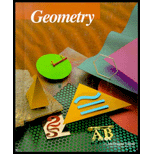
a.
To find: Whether distance is invariant under glide reflection.
a.
Answer to Problem 12WE
Yes, distance is invariant under glide reflection.
Explanation of Solution
Given:
Concept Used:
A translation moves ("slides") an object a fixed distance in a given direction without changing its size or shape, and without turning it or flipping it. The original object is called the pre-image, and the translation is called the image. An invariant is a property of a mathematical object which remains unchanged, after operations or transformations of a certain type are applied to the objects.
Calculation:
As per the given problem
Translation
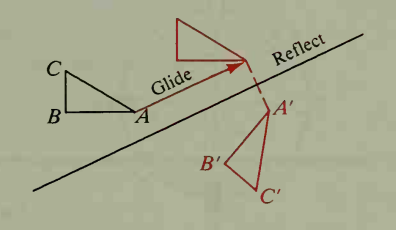
Distance between points is invariant under glide reflection.
i.e.
Hence,
Distance is invariant under a glide reflection.
b.
To find: Whether
b.
Answer to Problem 12WE
Yes, angle measure is invariant under glide reflection.
Explanation of Solution
Given:
Concept Used:
A translation moves ("slides") an object a fixed distance in a given direction without changing its size or shape, and without turning it or flipping it. The original object is called the pre-image, and the translation is called the image. An invariant is a property of a mathematical object which remains unchanged, after operations or transformations of a certain type are applied to the objects.
Calculation:
As per the given problem
Translation
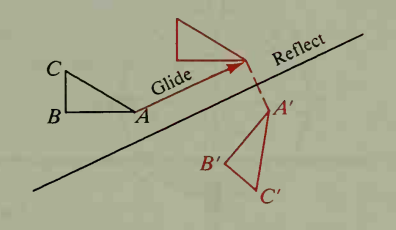
Angle measure between points is invariant under glide reflection.
i.e.
Hence,
Angle measure is invariant under a glide reflection.
c.
To find: Whether area is invariant under glide reflection.
c.
Answer to Problem 12WE
Yes, area is invariant under glide reflection.
Explanation of Solution
Given:
Concept Used:
A translation moves ("slides") an object a fixed distance in a given direction without changing its size or shape, and without turning it or flipping it. The original object is called the pre-image, and the translation is called the image. An invariant is a property of a mathematical object which remains unchanged, after operations or transformations of a certain type are applied to the objects.
Calculation:
As per the given problem
Translation
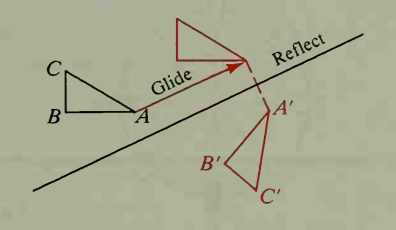
Area of
i.e. All the corresponding sides are equivalent & angle formed at all the points are same.
Hence,
Area is invariant under a glide reflection.
d.
To find: Whether orientation is invariant under glide reflection.
d.
Answer to Problem 12WE
No, orientation is invariant under glide reflection.
Explanation of Solution
Given:
Concept Used:
A translation moves ("slides") an object a fixed distance in a given direction without changing its size or shape, and without turning it or flipping it. The original object is called the pre-image, and the translation is called the image. An invariant is a property of a mathematical object which remains unchanged, after operations or transformations of a certain type are applied to the objects. Orientation is how the relative pieces of an object are arranged.
Calculation:
As per the given problem
Translation
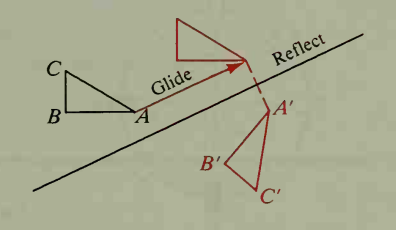
Slope of
Same for other sides as well. Reflection does not preserve orientation.
Hence,
Orientation is not invariant under a glide reflection.
Chapter 14 Solutions
McDougal Littell Jurgensen Geometry: Student Edition Geometry
Additional Math Textbook Solutions
Calculus: Early Transcendentals (2nd Edition)
A Problem Solving Approach To Mathematics For Elementary School Teachers (13th Edition)
Calculus: Early Transcendentals (2nd Edition)
Thinking Mathematically (6th Edition)
Pre-Algebra Student Edition
 Elementary Geometry For College Students, 7eGeometryISBN:9781337614085Author:Alexander, Daniel C.; Koeberlein, Geralyn M.Publisher:Cengage,
Elementary Geometry For College Students, 7eGeometryISBN:9781337614085Author:Alexander, Daniel C.; Koeberlein, Geralyn M.Publisher:Cengage, Elementary Geometry for College StudentsGeometryISBN:9781285195698Author:Daniel C. Alexander, Geralyn M. KoeberleinPublisher:Cengage Learning
Elementary Geometry for College StudentsGeometryISBN:9781285195698Author:Daniel C. Alexander, Geralyn M. KoeberleinPublisher:Cengage Learning

